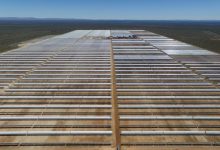Countries reporting to the International Energy Agency’s Photovoltaic Power System Programme now boast at least 500GW of solar capacity as of the end of 2018, after nearly 100GW was installed in 2018.
International Energy Agency’s (IEA) Photovoltaic Power System Programme (PVPS) is one of the collaborative R&D Agreements established within the IEA back in 1993 and is currently made up of 32 members from around the world.
The IEA PVPS exists to “enhance the international collaborative efforts which facilitate the role of photovoltaic solar energy as a cornerstone in the transition to sustainable energy systems.”
The IEA PVPS’ latest Snapshot report was published this week and revealed that around 97.9GW of solar PV capacity was installed in IEA PVPS countries in 2018 and up to 99.8GW was installed around the globe in total.
This number clashes with figures published by Bloomberg New Energy Finance and SolarPower Europe earlier this year, who recorded 109 GW and 104 GW respectively. Various analysts and technology associations have reported between 90GW and 110GW installed in 2018.
What most can agree on, however, is China outperformed the originally pessimistic revisions made during the middle of 2018 following the country’s decision to cap solar installations. According to the IEA PVPs, China installed 45GW in 2018, well up on revisions and only slightly down on the 53GW installed during 2018.
Revisions to global figures were also overly pessimistic in the wake of China’s policy moves, and in the end excess supplies in the global market allowed for larger installation volumes in several emerging and established markets.
Among these growing markets was India, which installed 10.8GW in 2018, and Australia, which installed 3.8GW. Mexico installed close to 2.8 GW and Korea installed 2GW.
Markets in the Middle East and Africa also experienced significant growth as well, however a large part of this growth won’t be visible until 2019 figures emerge, when most of the newly-installed projects will come online – specifically in the UAE and Egypt.
The United States and Japanese markets remained relatively stable in 2018.
The IEA PVPS also claims that solar PV’s contribution to global electricity demand reached 2.6% in 2018 and is expected to only grow in the future as “PV has the potential to become a major source of electricity at an extremely rapid pace in several countries all over the world.”
While the IEA PVPS did not provide a prediction for global solar installations in 2019, Bloomberg New Energy Finance is currently expecting 2019 installation numbers to reach as high as 125 GW to 141 GW, and IHS Markit expects figures to reach 129 GW.
[pdf-embedder url=”https://reneweconomy.wpengine.com/wp-content/uploads/2019/04/IEA-PVPS_T1_35_Snapshot2019-Infographic.pdf”]







